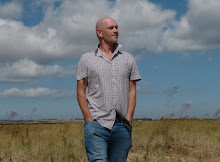Previously I wrote about the supermarket effect on food miles, and how users of supermarkets might reduce their food miles and consequently reduce their carbon footprint. Fortunately, for those of us that break out in a rash at the very mention of a supermarket there are options. One of my favourites, although not neccessarily the best, is to go for wild food.
Wild food that can be obtained within walking distance of the house is an excellent way of reducing food miles to zero. If you don't live in the countryside then a short drive to a wild food area is no worse than driving to the supermarket and the food you obtain will not have been driven around, flown about or carried by ship. Not only are the food miles of wild food zero, or close to zero, they are not packaged - fantastic news for "green nerds" like me.
For those that turn up their noses at the idea of wild food let me tempt you with blackberries, chestnut stuffing, puffball fried in wild garlic, damson jam and even grilled fish with wood sorrel and mint salad.
The fact is that we use a tiny percentage of the planet's species as food when most of them are edible in some form or after some preparation.
Most people think of acorns as being poisonous, but with a little treatment they can be made into a tasty snack or even become part of the staple diet. Take a look at how to use acorns for a snack or to make acorn flour.
It may seem tricky to use wild food in order to reduce our detrimental effect upon the environment, but by using some imaginative recipes it is possible to make wild food a significant part of the diet and make a reduction in our food miles tally.
Recipes for Dandelions for salad, jelly and "coffee" could be useful.
For those that like salad the options are plentiful.
Cooking with weeds gives an idea of the number of options there are for using plants that we normally regard as a pest.
For those with a fishing rod virtually any fish can be eaten, not just the ones that they sell in the shops and if you have a gun woodpigeon is quite tasty! However, shooting and overfishing can be damaging to the environment too, so don't overdo it.
When I was young, my parents bought me a book with wild food recipes in. It was great!
There are loads of ideas in here and I've tried most of them. Some are good and once tried you won't want to go back to the supermarket, but some are pretty bad - chestnut soup is a complete waste of a delicious food. Birch sap wine, Rosehip syrup and Penny Bun stuffed with garlic sound good, but my favourite is nettle beer! A perfect drink for conservationists - cultivate a nettle patch in your garden (good for butterflies) and follow the recipe in this book (which is nicely illustrated with photos) and brew your own nettle beer in a couple of weeks.
You can even taste the sting!
Wild food that can be obtained within walking distance of the house is an excellent way of reducing food miles to zero. If you don't live in the countryside then a short drive to a wild food area is no worse than driving to the supermarket and the food you obtain will not have been driven around, flown about or carried by ship. Not only are the food miles of wild food zero, or close to zero, they are not packaged - fantastic news for "green nerds" like me.
For those that turn up their noses at the idea of wild food let me tempt you with blackberries, chestnut stuffing, puffball fried in wild garlic, damson jam and even grilled fish with wood sorrel and mint salad.
The fact is that we use a tiny percentage of the planet's species as food when most of them are edible in some form or after some preparation.
Most people think of acorns as being poisonous, but with a little treatment they can be made into a tasty snack or even become part of the staple diet. Take a look at how to use acorns for a snack or to make acorn flour.
It may seem tricky to use wild food in order to reduce our detrimental effect upon the environment, but by using some imaginative recipes it is possible to make wild food a significant part of the diet and make a reduction in our food miles tally.
Recipes for Dandelions for salad, jelly and "coffee" could be useful.
For those that like salad the options are plentiful.
Cooking with weeds gives an idea of the number of options there are for using plants that we normally regard as a pest.
For those with a fishing rod virtually any fish can be eaten, not just the ones that they sell in the shops and if you have a gun woodpigeon is quite tasty! However, shooting and overfishing can be damaging to the environment too, so don't overdo it.
When I was young, my parents bought me a book with wild food recipes in. It was great!
There are loads of ideas in here and I've tried most of them. Some are good and once tried you won't want to go back to the supermarket, but some are pretty bad - chestnut soup is a complete waste of a delicious food. Birch sap wine, Rosehip syrup and Penny Bun stuffed with garlic sound good, but my favourite is nettle beer! A perfect drink for conservationists - cultivate a nettle patch in your garden (good for butterflies) and follow the recipe in this book (which is nicely illustrated with photos) and brew your own nettle beer in a couple of weeks.
You can even taste the sting!


.png)




No comments:
Post a Comment